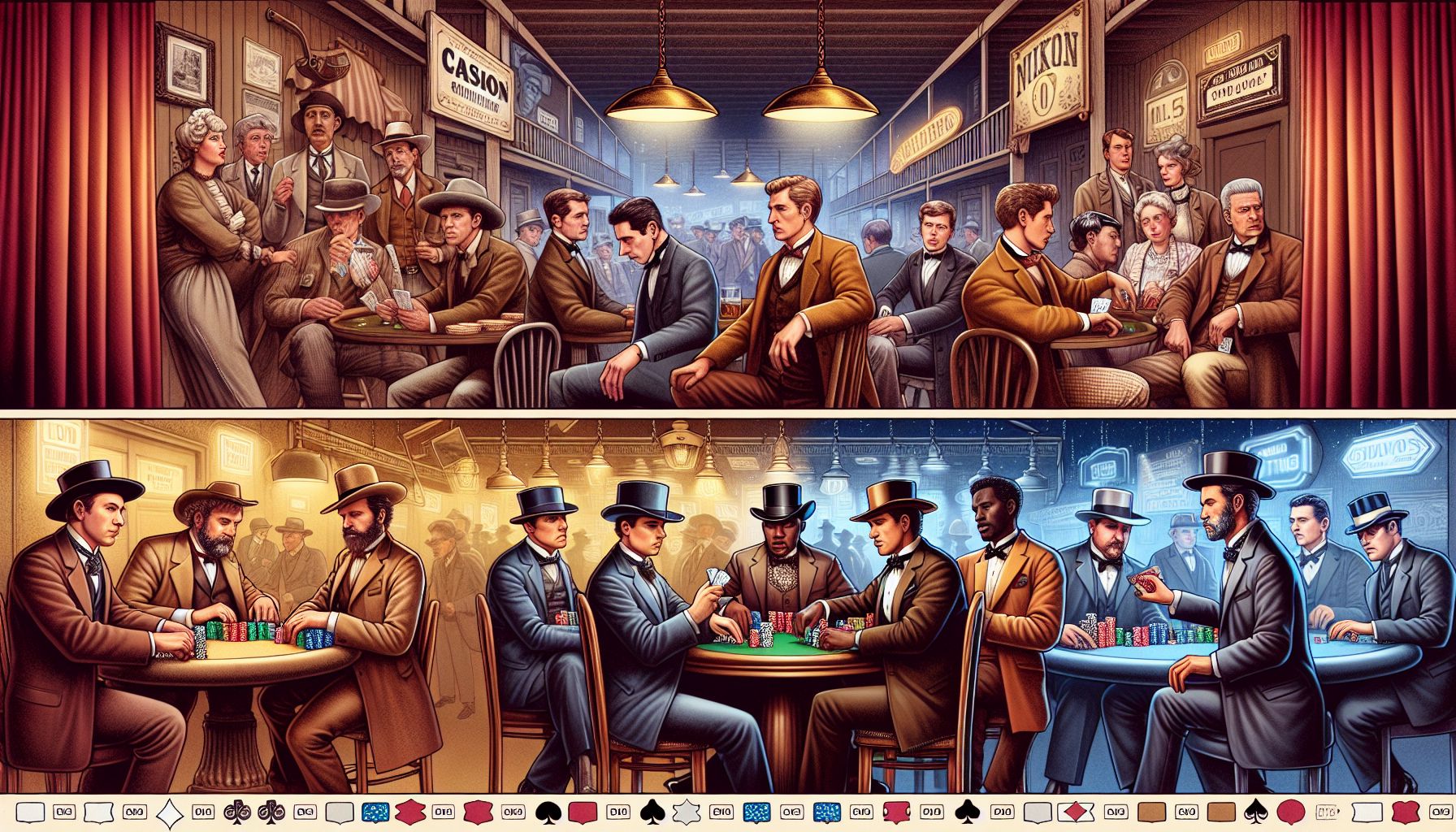Introduction
From the dusty surfaces of saloon tables in America’s Old West to the glamorous, chrome-and-velvet touched poker tables of the modern casino, The Evolution of Casino Poker the game of poker has come a long way. Its journey is attractive and dramatic as any high-stakes poker game, filled with twists, bluffs, bust-outs and wild cards. From obscurity to mainstream success, the game has seen it all.
Body
The Early Beginnings
Poker’s origins are a topic of much debate. Some say the roots trace back to a game played by Persian sailors. Others assert it started with the French game “Poque,” brought over to New Orleans by French settlers. In any case, The Evolution of Casino Poker the game as we know it began to take shape sometime during the early 19th century.
Poker in those days was simpler. It was a game of 20 cards, with a deck comprised solely of tens, jacks, queens, kings and aces. But by the 1830s, the deck expanded, accommodating the fifty-two cards we use today, and opening the door for more complex hand rankings.
The game was found widely in saloons throughout the American frontier. Tough cowboys, miners, and soldiers would gather around a table, dealing cards under dim oil lamps, using anything they had, be it gold nuggets, coins, or land deeds for betting. Poker in this era was not just a game; it was a way of life. A symbol of bravery, risk-taking and reading people; a way of discerning honesty amidst deceit.
Entering the Casino
As America began to settle and its Frontier closed, Poker found a new home, in the fledgling casinos twinkling along the newly formed Las Vegas Boulevard, in the heart of Nevada desert. While initially overshadowed by games like Craps and Roulette, The Evolution of Casino Poker Poker slowly but surely began to carve out its own corner in the casino.
Notoriously challenging and competitive, poker naturally drew the attention of casino-goers looking for a more strategic play. In 1970, Benny Binion, the owner of the Horseshoe Casino, hosted the first-ever World Series of Poker (WSOP). This tournament gathered the best poker players of America and featured ‘no limit Texas Hold’em’ as the main event, a type of poker game that is now considered the Cadillac of Poker. The WSOP demonstrated to a wider audience that poker was not just about luck, but also about skill and strategy. It was a game where even the underdog could triumph if they played their cards right.
The Poker Boom
Poker received its significant break in the early 21st century and achieved unexpected heights in popularity, which has been aptly called ‘the poker boom.’ A few events catalyzed this boom. The first one was Chris Moneymaker’s victory in 2003 WSOP Main Event. Moneymaker, an amateur player, qualified for the event through an online poker site and ended up winning the title. This victory gave a spark of hope to many amateur poker players globally, making them believe that they too could win big.
Broadcast media, especially Poker shows on ESPN, were instrumental in the poker boom. They added the ‘hole card camera,’ which made it possible for viewers to see the player’s hidden cards, making poker more viewer-friendly and exciting to watch. In turn, this brought more recognition to poker, attracting more players both offline and online.
Online Poker and Beyond
The advent of online poker not only made the game more accessible but also gave it an international platform. Companies like partypoker and PokerStars started offering online poker games and tournaments, attracting players from all corners of the globe.
Players no longer needed to travel to Las Vegas or Atlantic City to experience the thrill of poker. It was now available to them at their homes, adding comfort and convenience. Beyond this, online platforms heightened poker’s competitive aspect, with tournaments offering bigger prize pools and attracting poker pros along with amateurs.
Conclusion
From the dusty saloons to luminous casinos and now in the digital realm, the game of poker has adapted and flourished. Its popularity endures because it brings together chance, skill, competition, and the human instinct to challenge and decrypt the opponent. No doubt, poker has evolved into a global phenomenon that transcends cultural and geographical barriers.
The evolution of poker is a testimony to the human capacity for innovation, creativity, and adaption. A game that originated hundreds of years ago in the backrooms of saloons and on riverboats has gracefully transitioned into the digital age, never losing its charm or appeal.
Its journey from saloons to superstar tournaments mirrors the continuous evolution of our own society, indicating that no matter what the circumstance or setting, the human penchant for thrill, strategy and a little bit of gamble is eternal. After all, as the well-known saying goes, “Poker is not just a game, it’s a lifestyle.”
In the end, one can only wonder, what’s next for poker? But one thing is guaranteed; whatever the next chapter holds, it will sure be an exciting ride.
